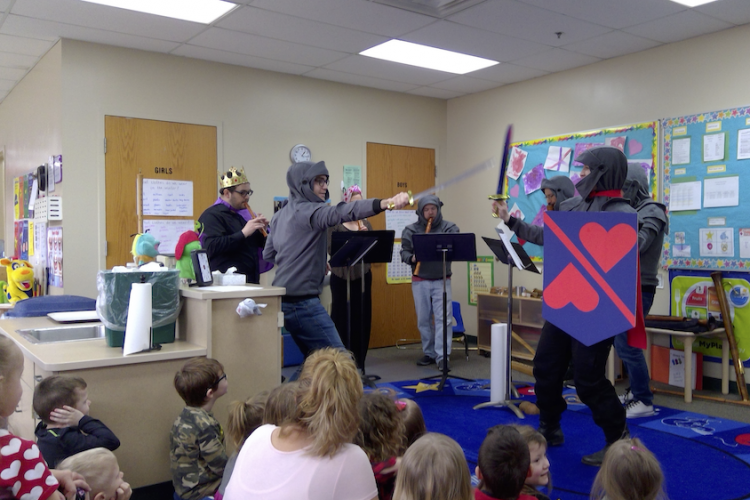
Early Music America offers awards annually to support projects for children or adults by ensembles and individual artists. The awards are intended to promote awareness and appreciation of early music and historical performance. EMA’s goal is to draw new audiences and participants to early music.
The deadline to apply for a 2019 Engagement Award is Monday, April 8, 2019.
Engagement Award Project: Shawms and Stories
Shawms and Stories brings a 30-minute musical storytelling program for 5th-6th grade children and their families to libraries, museums, and community centers in South-Central Indiana. This season, we journeyed to the late Middle Ages through the Renaissance to tell the story of the Life of a Knight through his oath to serve, unrequited love, battle, and death. The story was modified for younger audiences where appropriate.
Early Music is central to this project. We perform on copies of Renaissance instruments including shawms, dulcians, recorders, harp, drum, and sackbut in this program. The project begins as we introduce the “strange flutes and toots you see before you.” After the performance, we welcome questions. We found that about half of the questions were about history and dress and the other half were almost exclusively about our instruments. Of particular interest to our young audiences were: gut strings on the harp, calf-skinned drum, and, of course, the name of the sackbut. We made sure to discuss our personal journeys to these instruments through our modern band training, recorder classes in elementary school, and more. Several students wanted to know what we started on—in this way, we were able to explain the clarinet as a path to the dulcian or the modern saxophone as a way to later study Renaissance recorder
Kids at all locations had substantial questions and comments about our instruments and attire. Our favorite discussion was around the harp. When we explained that the harp strings are made from sheep intestines, the kids many questions about how animals relate to music. One fifth-grader claimed that there are 100 types of sheep–he wanted to know which types were used for the strings.
There were also several questions about our attire: why did a girl play the knight? Why did the Medieval princess cover her hair? This allowed us to address questions of history and culture in our program that had music as its central focus. All of our community partners (Brown County Public Library, Monroe County Public Library, Ellettsville Boys & Girls Club, Brown County Head Start, and Spencer Elementary) strongly indicated they would like the project back. Additionally, most of our community partners indicated they could only implement the project if it was fully funded outside their organizations since they serve persons below the poverty line.

